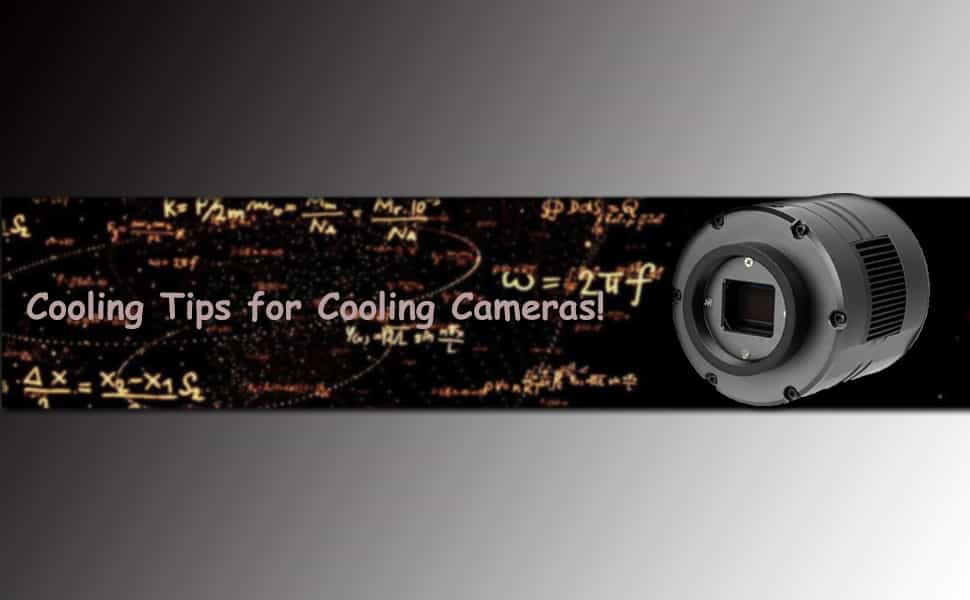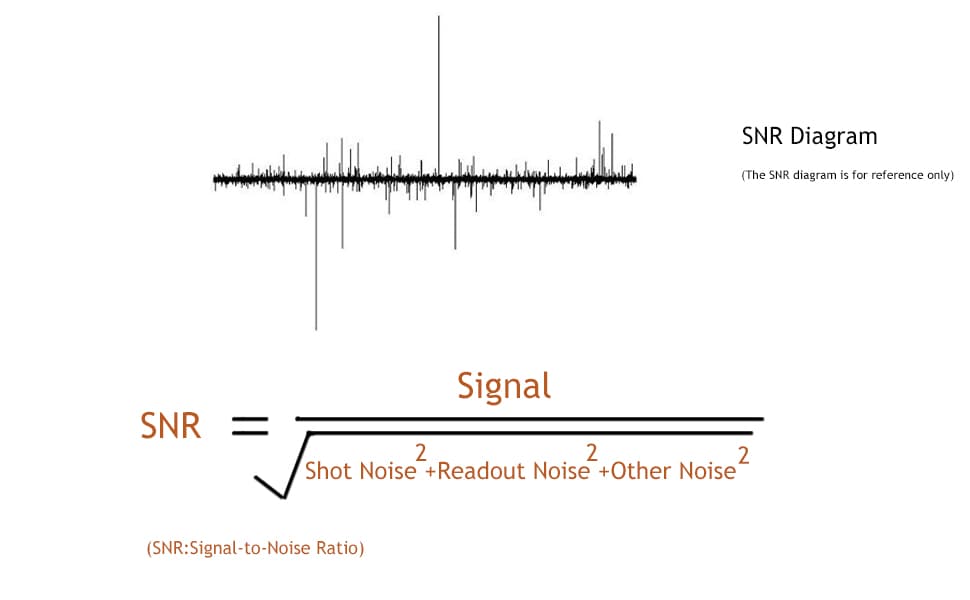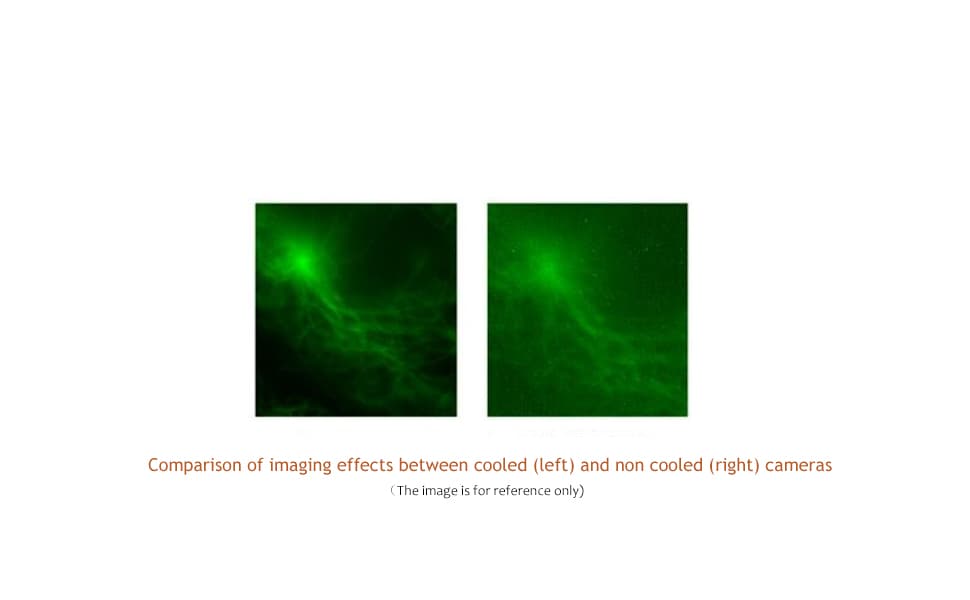Cooling Tips for Cooling Cameras!

Cooling Tips for Cooling Cameras!
Many users here may not have a good understanding of camera cooling, so it is easy to fall into the misconception that the lower the cooling temperature of the camera, the better the imaging effect.
First, let's learn what camera cooling is?
Camera cooling, as the name suggests, is to cool the camera sensor, including two parts: thermoelectric cooling (TEC cooling) and temperature control to achieve thermoelectric cooling. It is relatively easy to achieve thermoelectric refrigeration, but it is difficult to control the temperature of thermoelectric refrigeration.
Why does the camera need cooling?
Because we want to reduce the heat generated by the camera sensor during operation, thereby reducing dark current noise, achieving high signal-to-noise ratio and sensitivity, so that clear and accurate imaging can still be achieved under low light conditions.

Especially in deep space photography, the camera operates under low illumination and requires long-term exposure. The longer the working time, the greater the dark current noise, resulting in increased noise and reduced sensitivity of the image signal.

So, the focus of camera cooling is not on the level of cooling temperature, reducing the dark current is the key, and the size of the dark current is what we should be concerned about. Generally speaking, the dark current changes with temperature, and for every 5-7 ℃ decrease in temperature, the dark current drops by half of its original value.
So, how does the camera cool down?
Thermoelectric cooling Dewar bottles are commonly used in astronomical cameras to cool CCD or CMOS chips. The working state of a thermoelectric refrigeration dewar bottle is to use the working principle of a thermoelectric cooler (TEC), where the hot end is cooled by air or water (also known as air or water cooling).
The working principle of thermoelectric cooler (TEC)
Thermoelectric refrigeration, also known as semiconductor refrigeration or thermoelectric refrigeration, is a thermoelectric effect and mainly an application of the Peltier effect in refrigeration technology. When direct current passes through a circuit composed of two different conductive materials, there will be a phenomenon of heat absorption or release at the node, which was first discovered by the French man Peltier.
As shown in the following figure, a P-type semiconductor component and an N-type semiconductor component are connected to form a thermocouple. After connecting to a DC power supply, temperature difference and heat transfer will occur at the joint. At the upper joint, the current direction is N → P, and the temperature drops and absorbs heat, which is the cold end. At the next joint, the current direction P → N temperature increases and releases heat, therefore it is the hot end.
Several pairs of semiconductor thermocouples are connected in series on the circuit, and they are connected in parallel on the heat transfer surface, forming a thermoelectric refrigeration stack. As shown in the figure, after connecting to a DC power supply, the top of the thermoelectric refrigeration stack is the cold end, and the bottom is the hot end.
The working principle of thermoelectric refrigeration is to continuously dissipate heat and maintain a certain temperature at the hot end of the thermoelectric refrigeration stack through various heat transfer methods such as heat exchangers. The cold end of the thermoelectric refrigeration stack is placed in the working environment to absorb heat.
Temperature control generally adopts water-cooled or air-cooled methods:
Water cooling methods in the CCD era
This is a camera that uses a thermoelectric cooler (TEC) combined with water cooling for cooling. The cold end of the semiconductor cooler is in contact with the back of the CCD chip through a thermal conductive copper sheet, while the hot end of the semiconductor cooler is tightly attached to the water-cooled heat dissipation part, providing circulating water heat dissipation through an external water pump.
Air cooling methods in the CMOS era
This is a camera that uses a thermoelectric cooler (semiconductor cooler, TEC) combined with air cooling for cooling. The air cooling device consists of a heat sink and a fan behind it. The metal heat sink is tightly attached to the hot end to export heat and increase the heat exchange area with the air. At the same time, the fan works to suck external air into the heat sink for heat exchange, and the exchanged hot air is discharged through the air outlet.
Advantages and disadvantages of air cooling and water cooling
The air-cooled structure is simple, inexpensive, safe and reliable, but the noise impact is significant.
Water cooling uses liquid circulation, which is better than fan cooling and has less noise, but it is expensive and prone to condensation.
Finally, let's talk about how to use a cooled camera?
After introducing the above content, everyone has a general understanding of the working principle of refrigeration cameras. Simply put, using thermoelectric cooling (TEC) to reduce the temperature of the camera chip, and then controlling the temperature through water or air cooling.
Is the cooling temperature of the camera as low as possible? From the above discussion, we know that the purpose of camera cooling is to reduce dark current. Generally speaking, a cooling temperature of around -25 ℃ can already meet the vast majority of application needs. A lower cooling temperature requires more complex cooling equipment, which will increase costs and the possibility of malfunctions. It also inevitably increases the size and weight of the camera, which involves portability issues. Therefore, it is necessary to strike a balance between them, It's not that the lower the cooling temperature, the better.
So which cooling camera would you choose to use from SVbony?
Thanks for reading.Welcome to recomment.








